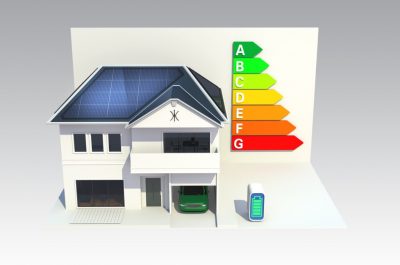Power prices and household budgets: perception v reality
Recent news articles have labelled power prices a key election issue, with an Australia Speaks survey revealing them as the most concerning household expense for the majority of those polled[1]. 35 per cent of respondents cited electricity and gas prices as their key concern, above insurance and health (22 per cent), mortgage, (16 per cent) groceries (15 per cent), petrol (7 per cent) and other expenses (5 per cent).
So what sits behind Australians’ concerns with power prices? Are power prices actually rising? What can be done to ease concern over energy bills?
Let’s talk prices
Electricity prices remain a key issue in most states, following a period starting more than a decade ago of significant government-mandated network investment, decreasing energy consumption (with the rise of solar PV and energy efficient appliances), government incentives like the solar bonus schemes and the unexpected closure of several major generation plants. The net effect has been electricity price increases at various points since 2009 which caught customers and politicians by surprise. Gas prices have been subject to similar volatility in recent years as wholesale gas costs continue to align with export parity prices.
However, the latest household spending data from the September quarter 2017 revealed that electricity accounted for only 2.17 per cent of total household spending, while gas and other fuels accounted for 0.87 per cent. While this was an increase on 2011, where they accounted for 1.99 and 0.72 per cent respectively, the proportion of spending on electricity and gas was well overshadowed by discretionary spending on both alcohol (4.49 per cent) and holidays (5.83 per cent). Other expenses such as mortgages and rents (15.0 per cent), insurance and health (6.62 per cent), groceries (10.21 per cent) and fuel and other transport expenses (10.32 per cent) also far outweighed typical household expenses on electricity and gas.

The household spending data clearly shows that electricity and gas are small aspects of most households’ spending, especially when compared to the items that the Australia Speaks survey rated as lower concerns: insurance and health, mortgage, groceries and petrol. Based on the proportions of household expenditure, it appears illogical for households to be more concerned about electricity and gas bills than other much larger items.
The household spending data clearly shows that electricity and gas are a relatively small aspect of most households’ spending, but it doesn’t tell us specifically about prices because consumption levels also affect expenditure. The recently released March 2019 quarter CPI, however, does give us an insight.
This is a purely price-based measure and delivered some unexpected and welcome news for Australians, with electricity prices on average reducing by 0.6 per cent around the country. No states recorded a CPI increase for electricity, while New South Wales, Victoria, Queensland and South Australia recorded decreases. Meanwhile, gas CPI rose 0.8 per cent in the March quarter with a mixed bag of outcomes among the states.
|
Region |
March 2019 Electricity CPI per cent change |
March 2019 Gas CPI per cent change |
|
Australia |
– 0.6% |
+ 0.8% |
|
New South Wales |
– 1.1% |
– 0.7% |
|
Victoria |
– 0.1% |
+ 2.1% |
|
Queensland |
– 0.6% |
– |
|
South Australia |
– 0.6% |
– 0.3% |
|
Western Australia |
– |
– |
|
Tasmania |
– |
+ 0.9% |
|
Northern Territory |
– |
+ 0.6% |
|
Canberra |
– |
– |
This comes in a quarter where overall inflation remained flat, a rare occurrence given that inflation rates have only been zero or negative for two quarters since the global financial crisis more than ten years ago. This means Australian consumers are spending less in real terms on electricity bills and are very likely spending less as a proportion of household expenditure in 2019 than in the closing months of 2018.
Energy front and centre
In more good news, the broader energy industry appears to be heading in the right direction as the Energy Consumers Australia December 2018 Energy Consumer Sentiment Survey shows. This survey, which asks many questions of thousands of Australians, found that:
- Overall satisfaction with electricity and gas services rose in all mainland states and territories from the December 2017 survey.
- Overall value for money for both electricity and gas increased in all states and territories, while confidence in future value for money increased in all mainland states .
- Satisfaction with the level of competition increased in all mainland states.
- Consumer confidence that there is enough easily understood information available for them to make decisions about energy products and services increased in all mainland states.
Interestingly, the findings seem at odds with the voter concerns highlighted in the Australia Speaks survey. Perhaps this is because the sting from previous significant price rises has not been forgotten by voters – they can still remember when electricity was cheaper and prices seemed more stable. Energy prices have also been rich fodder for the increasingly shrill political debate on the issue, which has kept everyone’s attention. Despite improvements among these measures, overall levels of satisfaction in energy may not be sufficient to ease voter concerns.
An April 2019 Essential research poll asked survey respondents to what extent they approve or disapprove of three measures suggested as ways to keep power prices down. Irrespective of political leanings, most respondents either strongly approved or somewhat approved of:
- keeping existing publicly owned assets such as Snowy Hydro in public ownership (74 per cent),
- Helping households install battery storage and solar panels with $2,000 and low cost finance (73 per cent); and
- Increasing the share of power generated from renewable energy to 50 per cent (66 per cent).
Taking these results on face value, overall customer satisfaction with energy industry outcomes is increasing and survey results show that customers generally approve of proposed policy solutions. In the context of a real increase in electricity purchasing power for most Australians, these improvements in customer value should go a long way to alleviating customer concerns.
Impacts of behavioural biases
It is well documented that humans are subject to various cognitive and behavioural biases which can have profound effects on our decision making. Energy is no exception, with the special nature of how we use, price and charge for energy providing even more opportunities for biases.
One example is that energy is an input which allows the use of other goods and services. Consequently, customers don’t consciously feel they are undertaking a transaction every time they light their home or turn on their air conditioning, in contrast with the physical transaction that takes place when buying a loaf of bread or carton of milk.

This lack of tangibility is magnified by the fact that most customers pay for their electricity and gas only once every three months and after the event. This can lead to bill shock when a quarterly bill arrives in the mail and customers are startled at how high their bill is relative to their expectation based on their perceived usage on a non-tangible product.
The energy industry is undergoing significant changes, from the transformation of the generation mix and shifting peak period to rooftop solar and increased choice and functionality at the household level. It’s also well documented that consumers tend to like things to stay the same and can be more uncomfortable with change even when that change is in their interests – the status quo bias.
It’s logical then to assume customers want their energy transition to be smooth and predictable, in spite of the rapid changes. Energy developments have been front page news for years now and are fresh in voters’ minds, while other concerns have likely remained constant for most voters and are perceived as lesser issues.
It could be that part of the solution lies in ensuring customers are more in control of both their energy usage and their expectations, possibly through innovation around retail billing cycles or apps to better track and manage usage.
An uncertain certainty
If prices are generally decreasing, household expenditure on energy is relatively small, customer satisfaction with energy services and value for money are increasing and Australians of all political leanings are generally happy with proposed policies, we might expect to see the level of concern around energy prices receding in the future.
Behavioural biases provide some explanation for why this is not happening just yet, but they don’t explain the whole story.
The one certainty for a prospective government is that energy policy will be an issue among voters and policies will have to provide certainty and value for customers in order to turn the tide and lower consumer concerns.

